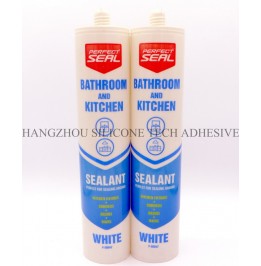The durability of sealants in waterproofing applications depends on a complex interplay of material properties, construction techniques, and environmental conditions. Understanding these factors is critical for ensuring long-term performance and avoiding premature failures.

Different sealant formulations exhibit varying resistance to environmental stressors. Polyurethane-based sealants offer strong adhesion and flexibility, making them suitable for joints subject to movement, with typical lifespans of 10–20 years under optimal conditions. Silicone sealants, known for their UV resistance, can last 15–25 years in outdoor applications but may require primers for certain substrates. Acrylic sealants, while cost-effective, generally provide 5–10 years of service due to lower elasticity and weather resistance.
The material’s hardness, elongation rate, and tear strength directly impact its ability to withstand structural shifts. For example, sealants with high elongation rates (over 300%) perform better in areas prone to thermal expansion or vibration. In contrast, rigid sealants may crack under similar stress, reducing their effective lifespan. Additionally, materials with low-temperature flexibility remain functional in cold climates, preventing brittleness and failure.
Proper substrate cleaning is non-negotiable for adhesion. Dust, oil, or loose particles create weak bonds, leading to peeling within 1–2 years. Roughening smooth surfaces (e.g., concrete) enhances mechanical interlocking, while solvent wiping removes invisible contaminants. For porous materials like wood, pre-sealing gaps prevents moisture ingress that could degrade the sealant from within.
Manual application errors, such as uneven bead sizes or incomplete coverage, account for 30–50% of early failures. Automated dispensing systems ensure consistent thickness, which is critical for performance. Over-application wastes material and may cause cracking, while under-application leaves voids. Industry standards recommend a minimum wet film thickness of 1.5mm for most sealants, with curing depth verified using non-destructive testing methods.
Sealant joints must accommodate anticipated movement without exceeding their elastic limits. For example, a 10mm joint in a bridge expansion gap may require a sealant with 50% movement capability (±5mm). Improper joint sizing—either too narrow (restricting movement) or too wide (reducing adhesion area)—can halve the sealant’s lifespan. Backer rods are essential for controlling depth and preventing three-sided adhesion, which causes cohesive failure.
UV radiation breaks down polymer chains in sealants, causing surface chalking and loss of elasticity. In tropical regions, annual rainfall exceeding 2,000mm accelerates erosion, while freeze-thaw cycles in cold climates induce micro-cracking. Coastal areas face salt spray corrosion, which degrades sealants at twice the rate of inland environments. Protective coatings or sacrificial layers can extend lifespan by 3–5 years in harsh climates.
Exposure to oils, solvents, or cleaning agents can soften sealants, reducing their waterproofing ability. For instance, hydrocarbon-based sealants may swell by 20% when in contact with gasoline, leading to joint failure. Mechanical abrasion from foot traffic or equipment vibration also wears down sealants, particularly in high-use areas like factory floors. Using abrasion-resistant formulations or adding protective covers mitigates this risk.
Regular inspections—ideally biannually—identify early signs of degradation, such as discoloration, cracking, or adhesion loss. Minor repairs, such as resealing small cracks or cleaning debris from joints, can prevent water infiltration that escalates into structural damage. In critical infrastructure (e.g., dams, tunnels), sensor-based monitoring systems provide real-time data on sealant performance, enabling predictive maintenance and extending service life by up to 50%.
By addressing these factors holistically, stakeholders can optimize sealant performance, reducing lifecycle costs and ensuring reliable waterproofing for decades.
Copyright 2019 by Hangzhou Silicone Tech Adhesive Co., Ltd. All rights reserved.
Bathroom Sealant | Acrylic Sealant | Dow Corning 795 | Aquarium Sealant | Dow Corning 732 | Clear Silicone Sealant | Polysulfide Sealant | Glazing Sealant | Mirror Sealant | IG Sealant
Powered by Onepound